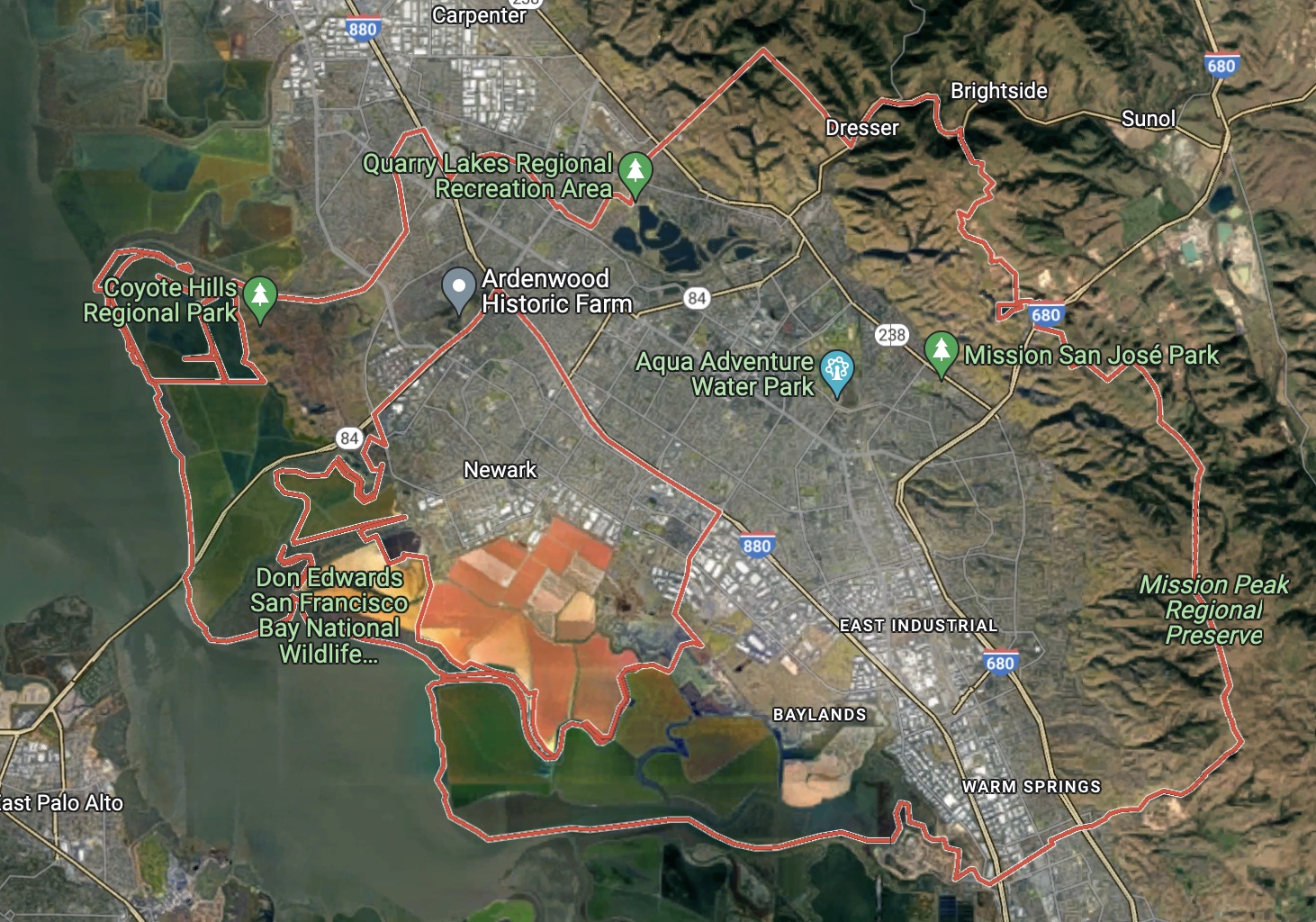We love parks. We believe cities should invest heavily in creating quality parks for residents to play and relax in; the importance of these shared spaces is well documented. Doctors in New Zealand, Japan, South Korea, Canada, the UK, and other countries even write “green prescriptions” for people to spend time parks to improve health. The virtue of parks is precisely why we find it so repulsive that cities have used them as an excuse to uphold segregation and housing unaffordability through a little-known municipal tool known as impact fees.
Cities charge impact fees, also known as “development fees”, on new housing as a way to mitigate any increased demand for city services resulting from new development. Impact fees can be useful tools that help cities fund vital priorities like affordable housing, education, fire departments, and parks. They can also, however, easily be abused to prevent the production of much-needed housing. These fees are often large enough to block new housing unilaterally. For example, a recent San Francisco Chronicle report highlights how Sunnyvale thwarted a small, single-unit backyard development by levying a $95,832 parks fee against it.
As per the loosely enforced Mitigation Fee Act, cities need to justify any impact fee they charge development with a “nexus study” showing a “reasonable relationship” between the type of development, the fee revenue use, and the size of the fee. To date, however, courts apply little scrutiny to these nexus studies. In recent cases they have upheld public-school impact fees levied against a university dormitory housing development only for enrolled students and in another case for a housing project that would temporarily house seasonal farmworkers without dependents. Even though the courts conceded that these specific developments would have no actual impact on the school system, they upheld the fees simply because the district’s nexus studies failed to distinguish between housing where school-age children are allowed to live and where they are not. Basically, courts will uphold an impact fee so long as it has at least a toe dipped in reality.
For a case study on the abuse of parks impact fees, we can look to the East Bay city of Fremont, California.

Google Maps Satellite View of Fremont, CA
(Spoiler: LOTS OF PARK LAND!)
With a median home price of $1,585,000 and some of the highest rents in the state, Fremont, California now ranks as the 34th most racially segregated city in the country. This is no accident. Like many other Bay Area suburbs, Fremont has excelled at enacting and maintaining exclusionary impact fees.
Fremont has long been known for their high impact fees. Studies from the UC Berkeley Terner Center in 2018 and 2019 note that Fremont has some of the highest fees in the state, charging as much as 18% of their median home price in impact fees alone. Today for each 800-square-foot one-bedroom unit, a developer building an apartment building in Fremont can expect to pay a total of $55,306 in development fees. For perspective, the average cost per unit excluding land costs and development fees is about $136,000 to $288,000. Broken down, Fremont’s fees include $1,969 in capital impact fees, $14,000 in affordable housing fees, $370 in fire fees, $2,540 in traffic fees, $7,125 in water fees, $8,030 in sanitation fees, and $4,009 in school fees. The single largest fee, by far, is the park impact fee which would charge the one-bedroom unit $17,263.
Fremont’s alleged justification for its extremely high park fees is that they cover the cost of buying and developing park space at a rate that would not disrupt their current ratio of five acres of parkland per 1,000 residents. This means that for every new resident Fremont adds, they would need to purchase and develop 217 square feet of park space. This quickly becomes very expensive in a “developed” city like Fremont, with a finite amount of horizontal space and sky-high property values. The City anticipates parkland acquisition to cost $2.5 million per acre, or $12,500 for every new resident. As the city adds more residents and buys up more parkland, remaining potential park space will become increasingly scarce and expensive to the point where impact fees become so high that few new housing projects pencil out, and the scarce housing that does get built will need to recoup the higher fees in the form of higher rents paid by wealthier tenants.
What’s particularly flagrant about Fremont is that their park fees don’t even maintain the purported parkland per capita number they cite as a baseline. Fremont’s fees ensure that the city maintains a ratio of five municipal parkland acres per 1,000 residents. However, when including the total parkland within the city of Fremont owned by either the East Bay Regional Park District or US Fish and Wildlife Service, Fremont has 105.6 acres of parkland per 1,000 residents, giving it the fourth highest parkland acres per capita of the 100 most populous US cities. Even if we don’t count “undesigned” parkland In our calculation, including the dozens of miles of nature trails in Fremont, Fremont would still have 7.63 acres of designed, non-trail park space per 1,000 residents. Using this definition of parkland that is even narrower than Fremont’s, they can increase their population by more than 50%, acquire no additional parkland, levy no parkland acquisition fees, and still maintain five acres of designed parkland per 1,000 residents.
| City | Parkland Acres/1,000 Residents (Rank among 100 most populated US Cities) | Designed Parkland Acres/1,000 Residents (Rank among 100 most populated US Cities) |
| Fremont, CA | 105.6 (4) | 7.63(28) |
| San Diego, CA | 28.2 (2) | 6.29 (45) |
| San Jose, CA | 17.6 (36) | 2.07 (90) |
| Anaheim, CA | 12.9 (51) | 1.81 (95) |
| Los Angeles, CA | 9.4 (65) | 2.73 (85) |
| San Francisco, CA | 7.0 (82) | 3.93 (70) |
(Source: Trust for Public Land 2021 City Park Facts Report)
Side note: Designed parkland is parkland that was created, constructed, planted, and managed primarily for human use.
To put it simply, housing for the working class cannot be built in Fremont because the city charges prohibitive impact fees to create parkland that already exists.
But even if you believe that the acquisition and development of parkland is the single most important need a city must provide for – even if it comes at the cost of sustainability, integration and housing affordability – impact fees are still not the most effective method of funding parks. Fremont raises far more annual revenue from sales and property taxes than it does from its park impact fees. Since new housing units and residents will provide additional property and sales tax revenue which can be duplicated each year unlike the park impact fee, it is likely that, in the medium and long term, the park impact fee reduces potential park funding by precluding other more sustainable sources of revenue. After all, Fremont can’t collect park impact fees from housing that doesn’t get built because the park impact fees are too prohibitive.
Fremont is a good case study of how cities weaponize impact fees against working-class renters, but they aren’t unique. Cities like Pasadena, Irvine, and Palo Alto are just a few other examples of California cities with prohibitively steep park impact fees that are calculated on the assumption that a fixed acreage of land must be purchased for each new resident, no matter the cost of that land. Because impact fees like these are based on land values, they are most restrictive in the most expensive areas, where housing is in the highest demand, and get even worse as land values rise.
AB 602, which went into effect this January, may help reduce this problem slightly by mandating more thorough nexus studies and small-unit friendly fee calculations, based on square footage rather than the number of bedrooms, but it won’t fix the problem. In order to chart a more sustainable path for growing our parks and our housing, we need to look beyond the idea that new city services and facilities must be funded by upfront fees on new housing development. Cities should recognize that new housing development raises revenues that will facilitate new parks, while the only thing these fees accomplish is to shut down most new housing.

